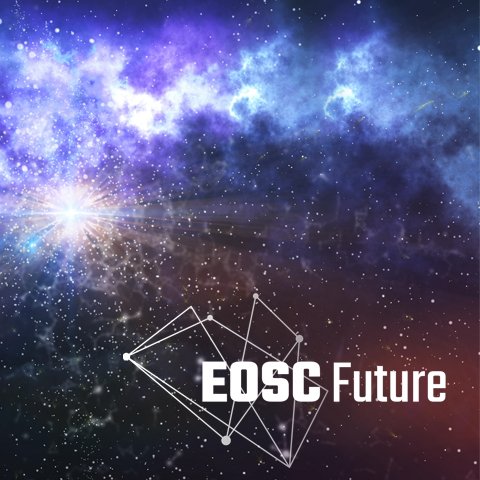RESTORED 8/5/23
More and more of us are getting the message that something very ominous is about to take place. I promise to keep you updated as things develop. The picture is coming into focus slowly, but God is leading and it he will provide…
HEADS UP! PRAY, PRAY, PRAY
spacer
 spacer
spacer
CERN FASER EXPERIMENT – ICECUBE/DEEPCORE DARK MATTER EXTRACTION PROGRAM, SOUTH POLE, ANTARCTICA
Quarantine Beat
August 10th, 2021.
spacer
 BEFORE IT’S NEWS
BEFORE IT’S NEWS
Major Event Upcoming: Summer Solstice 21 June 2020 – More Than Just a Super Rare Planetary Alignment (Video)
THEY LIED TO US! 2020 EVENTS THEY DON’t WANT YOU TO KNOW ABOUT EPISODES #3 + 4
spacer
I saw an opportunity to post these examples of the numerous places where the Lord has turned the water to blood. These are not all of the places by any means. And this has been going on now for at least a decade. You can buy the BS that “scientists” hand you. I know that GOD is doing this for your sake. He has made all different kinds of waterways, in all different countries, states, provinces and cities turn blood red. Moving water, standing water, waterfalls, rivers, oceans, locks, canals, lakes, creeks, even in the frozen artic. Why, so that NO ONE COULD EXPLAIN IT AWAY!
God is warning everyone. He gave the people of NOAH’s day 100 years. I am certain we have had even more than that. I know for a fact that I have been warning you for 40 years myself. I picked up the mantle from someone who had probably been warning for 50 maybe 60 years himself. TIME IS RUNNING OUT! Please heed the call. God is Calling YOU to a deeper walk with HIM.
LOOK at this photos! It should really give you pause!
Endtime Signs: Sea, Rivers, Springs Turn Blood Red
Collection by Ramona Powell • Last updated 7 days ago
Revelation 16:3-4 “and the second angel poured out his bowl into the sea, & it turned to blood like that of the dead, & every living thing in the sea died. The third angel poured out his bowl on the rivers & springs of water & they became blood.”
In 2019, the clock was set at two minutes to midnight.
“It is now 100 seconds to midnight,” declared the Bulletin’s president, Rachel Bronson, at a Washington D.C. news conference while a black cloth was lifted to reveal the time on the “end of the world clock”
.The Doomsday Clock announcement comes only days after US President Trump has decried climate “prophets of doom” in a speech at the World Economic Forum in Davos…
spacer
2 Eclipses…Smile Now, Cry Later, Ice & Fire
Not only have the upcoming annular solar eclipse been the focus of recent discussions, but it also has been pointed out in movies, music, company logos and all kinds of media for many decades. Something that particularly draws attention to this date – the upcoming annular eclipse on June 21st, which is also Father’s Day – is this masonic mural at the Bank of America in Charlotte N.C.

In addition to this, the knowledge that we have been spoon-fed by the global education systems may mostly be blown out of the water after this weekend, given that our understanding of the world around us could prove to be very different to what would be considered socially and scientifically acceptable.
If you are unable to watch this video on YouTube’s platform – here is another link:
spacer
Please share this video with as many people as you can.
The upcoming solar eclipse that will mark the start of Summer and Father’s Day, would seem to play an important role in predictive programming and is also pointed at in the Bible. The window of time between this celestial marker and the Buck Moon eclipse that will occur on July 4th – 5th, would seem to be very important for our enemy and could see great changes in the world, not just in the way of life that we have been used to, but also to what we thought we knew about the universe.
For those who have been waiting for years to see an escape from this world, this window of time is probably the highest watch time we have seen since the Revelation 12 sign occurred on September 23rd 2017. It is very possible that our long-awaited hope will finally arrive!
The Series on the Harvest and Temple models is found at the link below and explains WHY there will be a division in God’s harvest and between the waters above the firmament and the waters below the firmament. Please watch it if you have not seen it yet! It will answer a lot of questions you may have surrounding the Rapture and when it will occur.
If you are unable to watch this video on YouTube’s platform – here is another link:
https://www.brighteon.com/6ace1b48-95e4-466d-86ea-65b050fd803e

spacer
Hal Turner – Nation

Billygoat Gates Mosquitoes From Hell Exposed!
Ordo Ab Cho is the Latin phrase for “Order Out of Chaos”.
Professor Georg Wilhelm Friedrich Hegel, a Freemason and a political and social scientist at the University of Berlin (1817-1831), maintained that man could shape history and achieve ultimate peace only through repetitive episodes of controlled conflict between opposing forces. Hegel advocated the idea that men must create, manipulate and manage that conflict in order to create a per-determined outcome – the controlled change, the synthesis.
Bible Prophesies Chaos Ahead – The present turmoil we find ourselves in is child’s play compared to the world upheaval just ahead as foretold in the Bible. And the four angels were loosed, which were prepared for an hour, and a day, and a month, and a year, for to slay the third part of men. Rev 9:15
spacer
spacer
Doom? Or Just Conspiracy Theory? Bank of America Mural Alledgedly Happens Tomorrow, June 21, 2020
The BOA Mural (for short) has been the topic of dozens of articles and stories over the years, but it APPEARS that tomorrow, June 21, 2020, the world may actually find out what’s what.
The symbolism for WHAT IS GOING TO HAPPEN is buried within these 3 “Triptych panels” of the Bank of America Mural, located in the bank’s corporate headquarters in Charlotte, NC:
The summer solstice this weekend ties in with the BOA MURAL as well as with the Temple of the Sun at Chicen Itza, Mexico.
See if you can find the symbolism that is the “link.”
One clue to the “when” is the ECLIPSE at far right of BOA mural–which will be happening 6-21-2020 visible in middle east/Europe but not in the U.S.A.–it WILL APPEAR over the pyramids just as the mural shows us!
Seems almost a mirror for the symbolism in the BOA mural this weekend. Even the center panel with the riots in the streets and hazmat medical responders for the COVID-19 risks at the Trump Rally seem to be eerily foreboding.
It could be a WILD RIDE this weekend.
Let’s see what (if anything) plays out . . .
spacer

There is a phenomenon of the eclipse that has in mythology been connected with the upcoming end of the world and/or drastic change approaching. John’s Revelation claims that an eclipse of 3 days will precede the end of the world. Also the famous fortuneteller Nostradamus predicted an eclipse of 3 days introducing the end of all times. This way, the eclipse has taken the role of the herald of doom. (After all, who wants to stay around when the seven sigils are broken?
The same symbol can be found as a wall-painting at a military bunker from WWII at Hamburg below the statue of Bismarck, thus it was concluded that the symbol of the Black Sun was incorporated into the ideas of some sort of “occultist” movement/ideology during the Third Reich. Although this speculation is somewhat reasonable, I have not been able to find substantial proof for verifying this rumor, since information about this subject is scarce and shady, and mostly overshadowed by prejudice against the “pseudo-cultist activities” of the political elite of that time and the SS especially, in case it is mentioned anywhere at all.
Yet it might bear some significance possibly that in the Germanic mythology, the wolf Fenriz is said to swallow the sun after being released at the beginning of the Wolf-Age, causing the sky to darken. The symbolism of the Black Sun is subject to fear for the powers of stasis since it indicates drastic and terminal change. How can it be applied in a sensible way by the Setian, or does it bear positive significance inherently already?
“The Vril Society began around the same time as the Thule Society when Karl Haushofer founded the “Bruder des Lichts“, which means Brothers of the Light. This organization is sometimes referred to at the Luminous Lodge.
This group was eventually renamed the Vril-Gesellschaft as it rose in prominence and united three major societies:
- the Lords of the Black Stone, having emerged from the Teutonic Order in 1917
- the Black Knights of the Thule Society
- the Black Sun, later identified as the elite of Heinrich himmler’s SS
Whereas the Thule Society ended up focusing primarily upon materialistic and political agendas, the Vril Society put its attention on the “Other Side.”
A local medium named Maria Orisc began getting messages in an unknown language and couldn’t transcribe them, so began meeting with key members of these societies, along with another medium named Sigrun. Accordingly, the messages were coming from a being from the star Aldeberan, which has two planets which form the ’Sumeran Empire’.
In the Sumeran empire were two classes of people – the Aryan or Master race, and a subservient race which had developed in a negative fashion as a result of mutation from climatic changes.
Peter Moon goes on to say,
“A half billion years ago, the Aryans (known as the Elohim or Elder Race) began to colonize our solar system as Aldebaran’s became uninhabitable. Marduk, existing in what is today the asteroid belt , was the first to be colonized, then Mars. When they came to Earth, these Aryans were known as the Sumerians.
(Note: Here we are coinciding with the work of Zechariah Sitchin)
Shambhala
From some of the accounts available, Shambhala appears to have been a centre of spiritual enlightenment, very reminiscent of James Hilton‘s ’Shangri-La’, but others say that it was a centre of occult power and arcane teaching.
Its leader was thought variously to be either an evil, tyrannical Sorcerer-King or a God-like ’Lord of The World’.We seem to be left with a choice as to which story we prefer to follow, and evidently which Path one desires to follow, too. The evil Left, or the good Right!
Apparently there were two factions (as in Hyperborea), one of which followed the Golden Sun, and the other the Black Sun. (The ’Black Sun’, incidentally, was as prominent an emblem of the Nazi mythos as was the Swastika!) According to Jean-Claude Frére, author of ’Nazisme et Sociétiés Secretès’, the people of Hyperborea, after migrating to the Gobi Desert over 6000 years ago, founded a new center, which they named Agartha. It became a great center of world learning, and people flocked there from all over the world to enjoy its culture and civilization.
However, a huge catastrophe supervened, and the earth’s surface was devastated, but the realm of Agartha somehow survived, under the earth.
The legend continues to relate that, as with the original Hyperboreans, the Aryans now split into two factions:
- one group heading north-west, hoping to return to their lost Hyperborea
- the second going south, where they founded a new secret centre under the Himalayas
Jean-Claude Frére concludes:
The sons of the Outer Intelligences split into two groups, one following the ’Right Hand Path’ under the ’Wheel of The Golden Sun’, the other the ’Left Hand Path’ under the ’Wheel of the Black Sun’.
The first preserved the centre of Agartha, that undefined place of contemplation, of the Good, and of the Vril force.
The second supposedly created a new place of initiation at Shambhala, the city of violence in command of the elements and human masses, hastening the arrival of the ’charnel-house of time.’
According to Peter Moon, in his book ’The Black Sun’, the ultimate concept of Thule is well represented in the myth of it as the capital city or center of Hyperborea, a word which literally means ’beyond the poles’.
As it is beyond the poles, Hyperborea is positioned as being outside of this dimension. Thule, being in the center, is positioned as the source of all life on Earth. In Greek mythology, Pythagoras was taught sacred geometry by Apollo, a god who was identified as a resident of Hyperborea.
In Pythagorean teachings, the Earth itself geometrically unfolds from a void in the center. This void has been recognized by many ancient groups, including the Sumerians, as the Black Sun. In this sense, Thule is synonymous with this Black Sun.
The word Swastika itself is means ’source’ amongst other definitions and represents an eternal cause or the fountain of creation. Accordingly, the Thule Society used the swastika symbol in their log to represent this idea.
The Black Sun is an even more esoteric concept than that of Thule. Represented as the void of creation itself, it is the most senior archetype imaginable. Thus, this namesake was reserved for the elite of the Thule Society. The Black Sun was actually a secret society within the Thule Society.
It was senior to other societies.
spacer

So many Democrats have no idea how evil their party is.
This subject matter is disturbing to listen to but it is true,I believe Hillary would have used these! Thank God for Trump, but people need to hear this, wake up America!
THESE SCIENTISTS THAT HAVE DEVELOPED THIS EVIL AGAINST HUMANITY ARE DEMONS!!
Remember when Jessie Ventura had his conspiracy theories show? He reported on this when Obama was President it was written in bills these fema camps in adgenda 21-31. Heavenly father help us Amen
These Frankenstein scientists need to be arrested, along with the corrupt government. These people are sick, and demonic.
Do you remember that homeless man in Texas saying the government was trying to kill the homeless. He said many went missing and he refused to go into the shelter, this was during one of those hurricanes! Such evil!This was painful to watch. Many of us have known this for a long time.
spacer

 THE END TOMORROW DARK MATTER EXPERIMENT
THE END TOMORROW DARK MATTER EXPERIMENT

































